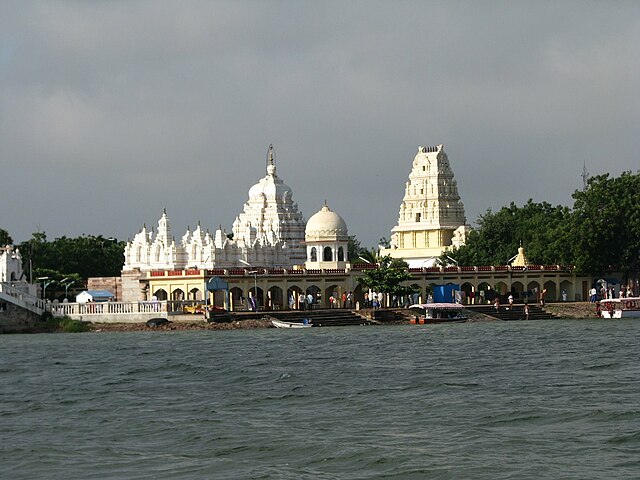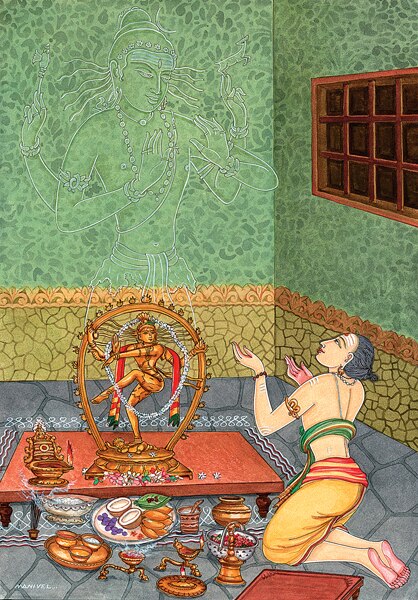Lingayatism is a Hindu denomination based on Shaivism. Initially known as Veerashaivas, since the 12th-century adherents of this faith are known as Lingayats.
Basava, the influential leader of Lingayatism
An idol of Akka Mahadevi holding Ishta Linga in her left hand
A necklace with pendant containing linga symbol of Shiva are worn by Lingayats. Rudraksha beads (shown above) and Vibhuti (sacred ash on forehead) are other symbols adopted as a constant reminder of one's principles of faith.
Kudalasangama in Bagalkot district, a temple and pilgrimage site linked to Guru Basavanna
Shaivism is one of the major Hindu traditions, which worships Shiva as the Supreme Being. One of the largest Hindu denominations, it incorporates many sub-traditions ranging from devotional dualistic theism such as Shaiva Siddhanta to yoga-orientated monistic non-theism such as Kashmiri Shaivism. It considers both the Vedas and the Agama texts as important sources of theology. According to a 2010 estimate by Johnson and Grim, Shaivism is the second-largest Hindu sect, constituting about 253 million or 26.6% of Hindus.
Shiva (above) is the primary deity of Shaivism.
The "Pashupati" seal from the Indus Valley civilisation.
Kushan coin of Vima Kadphises (2nd century CE), with a possible Shiva, holding a trident, in ithyphallic state and next to a bull, his mount, as in Shaivism. The deity was described by the later Kushans in their coinage as "Oesho", a possibly kushan deity.
Shiva (middle) is the supreme being of Shaivism, accompanied by his son Ganesha (left) and consort Parvati (right). Painting by Raja Ravi Varma.








